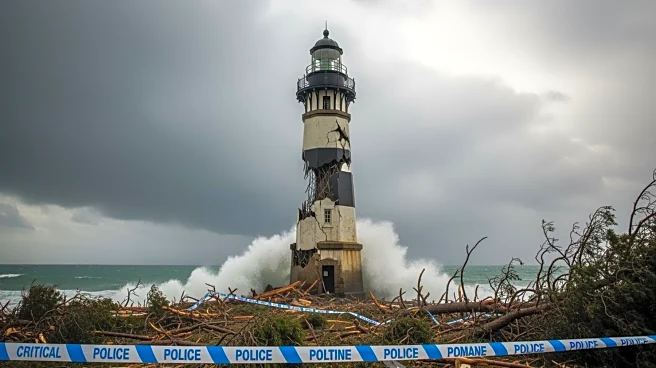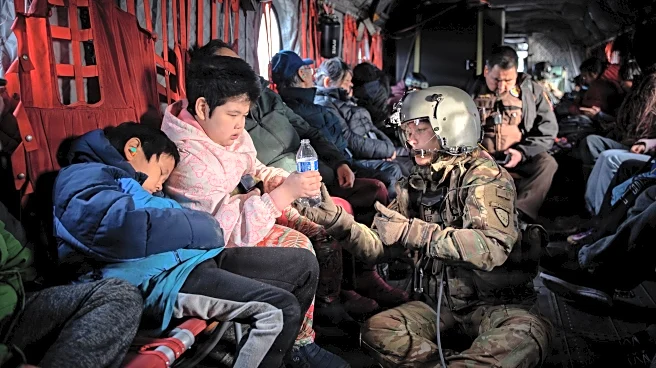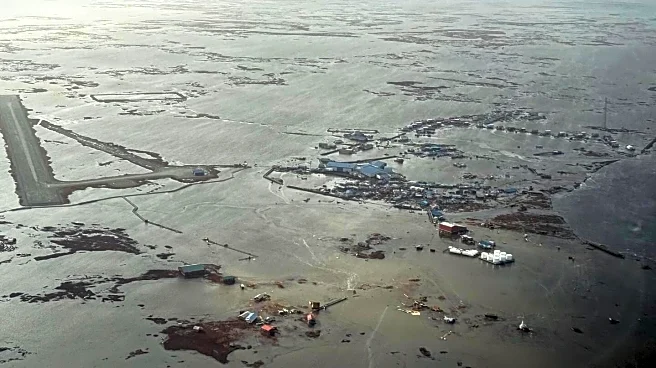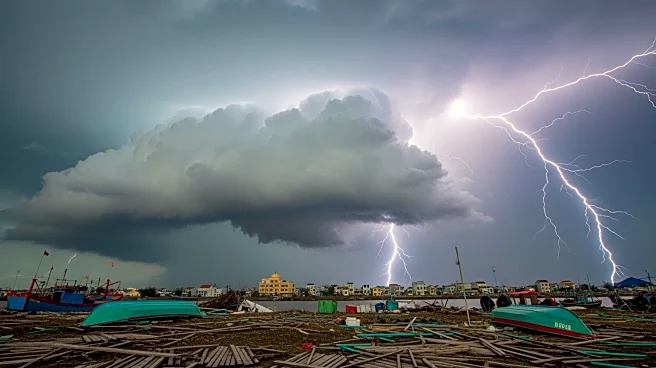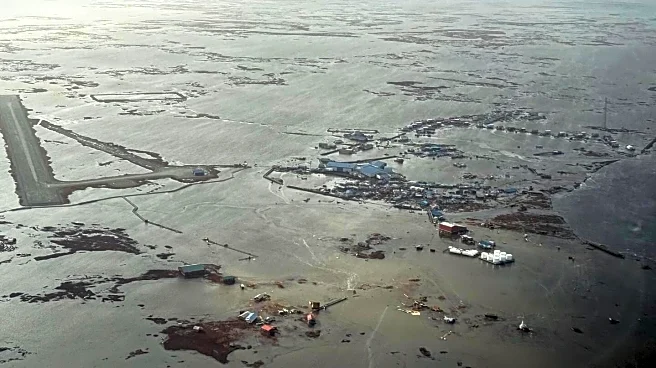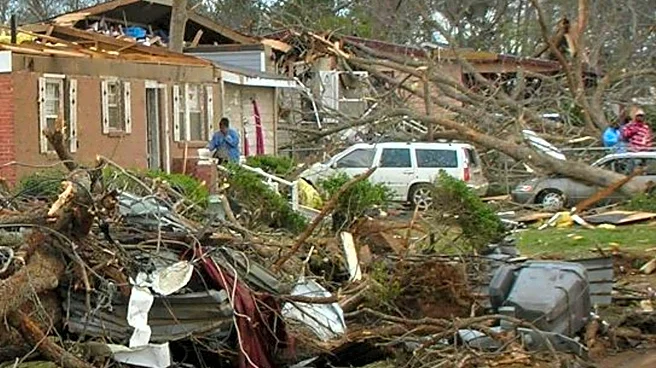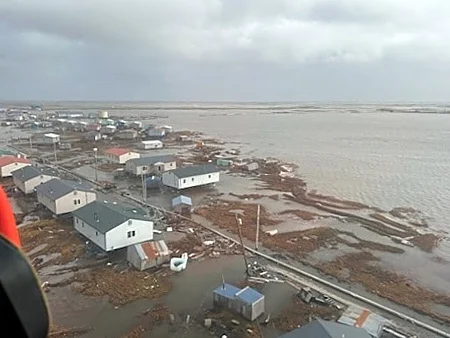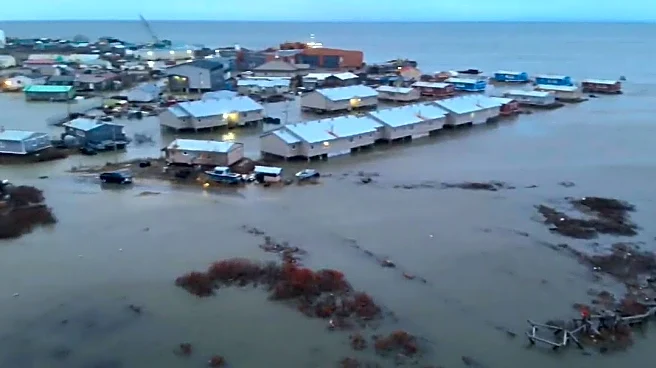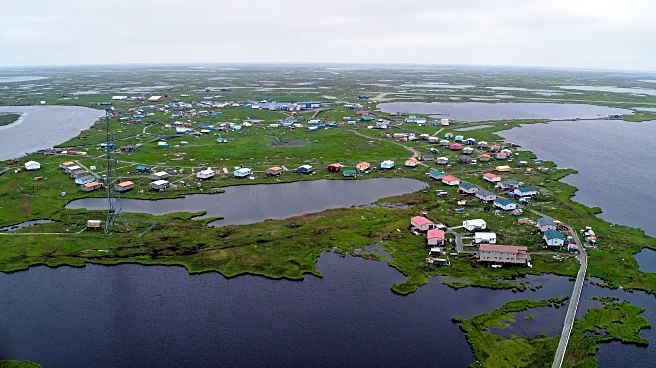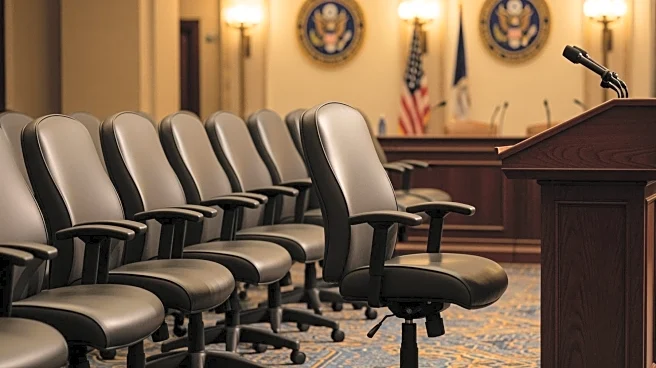What's Happening?
Governor Mike Dunleavy has requested a major disaster declaration from the White House following severe storm damage in remote Alaska villages. The remnants of Typhoon Halong caused extensive flooding,
displacing over 2,000 residents, with many unable to return home for at least 18 months. In Kipnuk, 90% of homes were destroyed, while in Kwigillingok, a third of residences are uninhabitable. The storm, likened to a Category 2 hurricane, resulted in one death and two missing persons. The Alaska National Guard has airlifted approximately 575 evacuees to Anchorage, with more expected. Efforts are underway to transition evacuees from shelters to short-term accommodations and eventually to longer-term housing.
Why It's Important?
The disaster declaration, if approved, would unlock federal assistance for individuals and infrastructure, crucial for recovery efforts in affected areas. The storm has highlighted vulnerabilities in remote communities, which rely heavily on subsistence living and are accessible only by air or water. The relocation of residents to urban areas like Anchorage represents a significant lifestyle change, impacting cultural and economic dynamics. The federal response, including search and rescue operations and environmental assessments, underscores the importance of coordinated disaster management in mitigating long-term impacts on displaced populations.
What's Next?
The federal government is expected to continue supporting evacuation and recovery efforts, with potential approval of the disaster declaration by President Trump. Anchorage officials are preparing to accommodate incoming evacuees, with plans to integrate them into the community. The transition from temporary shelters to permanent housing will be a priority, alongside efforts to provide employment opportunities for displaced individuals. The situation may prompt discussions on improving infrastructure and emergency preparedness in remote regions to better withstand future natural disasters.
Beyond the Headlines
The storm's impact raises questions about climate resilience and the sustainability of living in remote, environmentally vulnerable areas. The cultural implications of relocating indigenous populations to urban centers may affect traditional practices and community cohesion. Long-term recovery efforts will need to address not only physical rebuilding but also the preservation of cultural identity and support for mental health challenges faced by evacuees.
